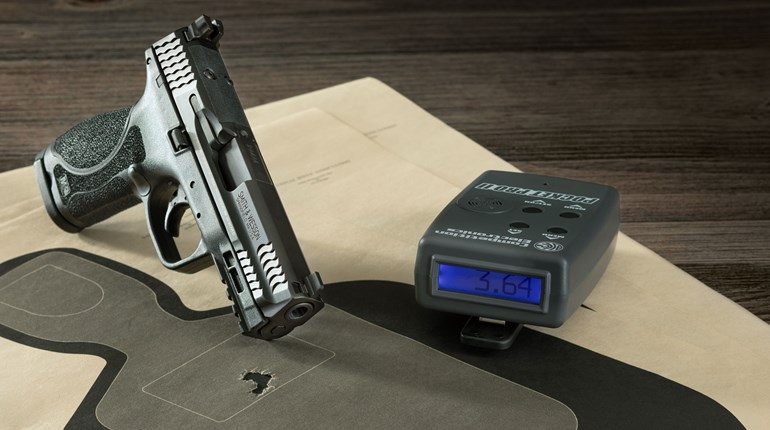
We’ve spent some time in recent weeks on what could reasonably be called the nuts and bolts of pistol technique. We’ve looked at carry methods (here and here), draw technique (here and here) and grip (architecture, mechanics and other considerations). Last week, it was stance. As we observed, stance may seem an odd thing to have to focus on in Carry Life, where the whole point is navigating daily life—a mobile process—while equipped for your own protection and for that of those around you.
However, we hope the point was clear: Just any old stance that’s merely comfortable won’t, as the saying goes, “get it done.” Now you’re ready for what comes next. What may surprise you is how little that “what” has to do with pressing the trigger.
So what will?
Picking either Weaver or Isosceles (or combining their best aspects as we recommend) is where you start for a totally practical reason: If your stance is poor, you can’t diagnose what else may be wrong with your technique, up to and including setting yourself up for firearm malfunctions. Get your stance out of the equation and the only likely remaining source of problems is grip.
When these are—pardon the pun—handled, the vast majority of modern defensive handguns will go “bang” virtually every time. You should still practice what to do to clear malfunctions, but their occurrence should be essentially zero. If not, you need a new carry firearm.
Now you’re ready for what comes next. What may surprise you is how little that “what” has to do with pressing the trigger.
When it comes to concealed-carry stance, don’t. Your first job when confronted by an aggressor is to “get off the X.” If “X” in this context invokes the piratical metaphor of a treasure map, you’ve got it exactly: “X” does indeed “mark the spot” in the bad guy’s plan—getting off it is an even higher priority than deploying your firearm.
And don’t be confused: This isn’t merely a matter of moral or even legal preference, but a thoroughly considered and historically vetted combat necessity. In his analysis of why U.S. pilots outperformed their Communist adversaries in air-to-air combat in Korea (despite initially inferior equipment), USAF Col. John Boyd developed the concept of the OODA loop way back in the 1950s.
OODA stands for “Observe, Orient, Decide, Act,” and the versatility of this conceptualization reaches far beyond dogfighting in fighter aircraft. Boyd himself explained it best in his 1981 book Patterns of Conflict: “In order to win, we should operate at a faster tempo or rhythm, or better yet, get inside (his OODA) loop.”
It’s the notion of getting “inside” an attacker’s OODA loop that makes clear the importance of stance. A stance that is only about shooting—or worse, that is merely comfortable—cannot, except by luck, be the basis for interrupting an attacker’s OODA loop. So work on a stance that keeps your firearm running (by not sabotaging draw or grip), which doesn’t hamper movement, and is comfortable enough that you’ll want to practice—it’s possible to get all three.
The best stance, therefore, isn’t Weaver or Isosceles, but the one that gets you “off the X” without compromising your own subsequent OODA loops. Since those loops may be small, like running the gun itself, and integrated, like the need to use your firearm in defense in a complex environment (cover is over here, and innocent bystanders are over there), a “good” stance is one that keeps your options open while limiting those of aggressors. Keep in mind that if you get inside their loop well enough, no shot may be necessary: They decide they’ve picked the wrong potential victim and withdraw—always the best outcome.
Considered readers will immediately see another necessity—situational awareness. In the context of firearms, this is almost always expressed in terms of Lt. Col. Jeff Cooper’s Color Codes of Awareness, and we’ve discussed these. We’ll likely discuss them again in the future, too, because if these are blown, OODA loops and stance won’t likely matter.
So work on a stance that keeps your firearm running (by not sabotaging draw or grip), which doesn’t hamper movement, and is comfortable enough that you’ll want to practice—it’s possible to get all three. As for how the prospect of movement proceeds from stance, we’ll get there.
Now Carry on.


































